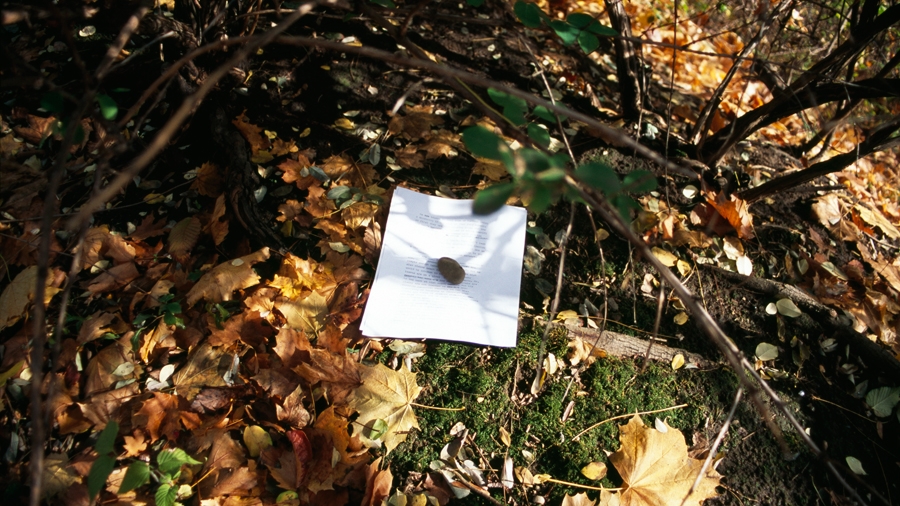EXT. HOUSE – NIGHT. Frank Heath is a rare artist who can claim such particular working conditions, when the lawns and driveways of the American home host his fugitive broadcasts from the domestic underclass: an ornate funeral for a coathanger attended by countless brethren, for example; or the messy aftermath of a shootout between an IV-bag sheriff and a pineapple outlaw. Both scenes figured into an early, formative series, Night Mail (for Jon Newton) (1998–2003), surreptitiously directed on the lawn of Heath’s eponymous friend, while similar works address unknown recipients, like select subscribers of the New Haven Register, who would rise to find supplementary copies of their daily newspaper dated in regressive order – a ruse Heath kept up for four weeks until actual delivery boys intervened (Old News, 2006). In a more recent string of recorded telephone calls, a bewildered man describes awakening to ‘a permanent midnight’ as the windows of his house have been replaced with slate (Fixed Window, 2011). Clearly Heath suits the role of lone trickster, though that storied figure may, in these cases, owe less to cultural than social causes. An atomised contemporary everyday gives his nocturnal eccentricities their shape and depth, and his gags a giftlike quality.
Since moving to New York in 2006, Heath has gained a new landscape of habit – Morningside Park, notable both as a focal point of the 1968 Columbia University protests and for its current lack of any tangible placard or record of this fact. A project entitled Graffiti Report Form (2012) assumes the guise of a video submission to the New York City parks department website – with the intent of documenting supposed vandalism – but abruptly shifts into essay film par excellence. Strewn about the park (rather appropriately) like Beckettian tramps, pages of Krapp’s Last Tape (1958), a Life magazine on the Columbia events and Heath’s own fictional manuscript co-opt the video submission’s female voiceover and undermine the viewer’s confidence that the geologic, journalistic and historic temporalities of this site could ever receive a clear and authoritative, artistic form.
This article originally appeared in the March 2012 issue.
